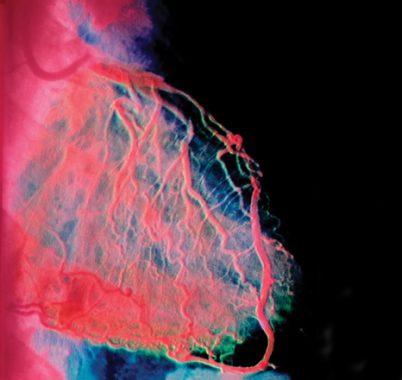GPs ‘could use ultrasound scans to guide statin treatment’

GPs could in future carry out routine ultrasound scans to identify people at risk of strokes or heart attacks and offer them preventative treatments, researchers have claimed.
Their study, published in the journal Global Heart, showed portable, automated scans could be used by ‘non-experts’ to pick up carotid artery plaques.
The scans identified plaques in many people without classic risk factors for cardiovascular disease such as high cholesterol, and could therefore expand the number of people eligible for treatments such as statins, the researchers said.
The study included 480 US and Canadian adults, aged an average of 60 years and without any symptoms, who underwent the scans as well as having risk factors such as cholesterol, blood pressure, glucose, weight, height, smoking status and family history recorded.
The scans were automated so that non-experts ‘such as GPs’ could ‘perform and interpret targeted ultrasound examination as part of a routine health assessment’, the authors noted.
The findings showed 42% of the participants had evidence of carotid artery plaques – 82% of whom would not qualify for statin treatment under the widely used 2002 US guidelines for cardiovascular disease prevention, which recommend lipid-lowering treatment at a 10-year risk of 20% or higher.
Under the newer, 7.5% risk threshold in updated guidelines published by US authorities last year, 14% of the people with carotid plaques would fail to qualify for treatment.
Although they conceded the approach still needs to be properly validated, the authors said: ‘It seems that plaque information from ultrasound images may serve as a guide for initiating medical intervention regardless of the availability or knowledge of traditional risk factors.
‘Our results further suggest… ultrasound images may help refine strategies for medical intervention. It might however still be too contentious to suggest that risk factors-positive and imaging-negative asymptomatic subjects may be spared from medical intervention. Conversely, arguments against initiating medical intervention on risk factors-negative and imaging-positive asymptomatic subjects become harder to justify.’
Professor Paul Leeson, professor of cardiovascular medicine at the University of Oxford a member of the Imaging Enhancement Expert Working Group for UK Biobank, who was not involved in the study, said the technique was an ‘attractive option’ for carrying out mass screening of populations for projects like the UK Biobank.
Professor Leeson said: ‘This paper nicely demonstrates how people with little imaging experience can undergo a short training programme and then use portable ultrasound systems in a wide variety of global health care settings.
‘The fact this imaging technology can be applied to large populations has also made it an attractive option for many of the major biobank research projects, such as UK Biobank. These projects are planned to generate vascular images for hundreds of thousands of individuals in different countries that, over the next few years, can be used to determine the true value of vascular imaging for disease prediction.’
Pulse July survey
Take our July 2025 survey to potentially win £1.000 worth of tokens

Visit Pulse Reference for details on 140 symptoms, including easily searchable symptoms and categories, offering you a free platform to check symptoms and receive potential diagnoses during consultations.










